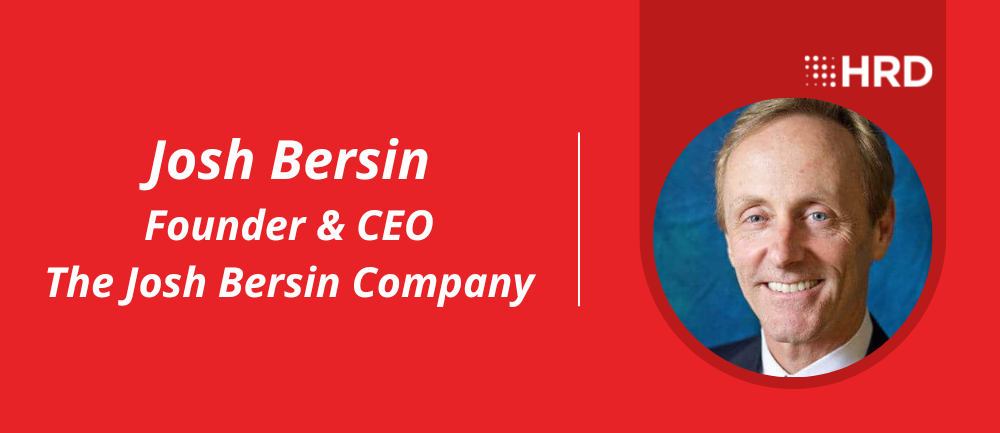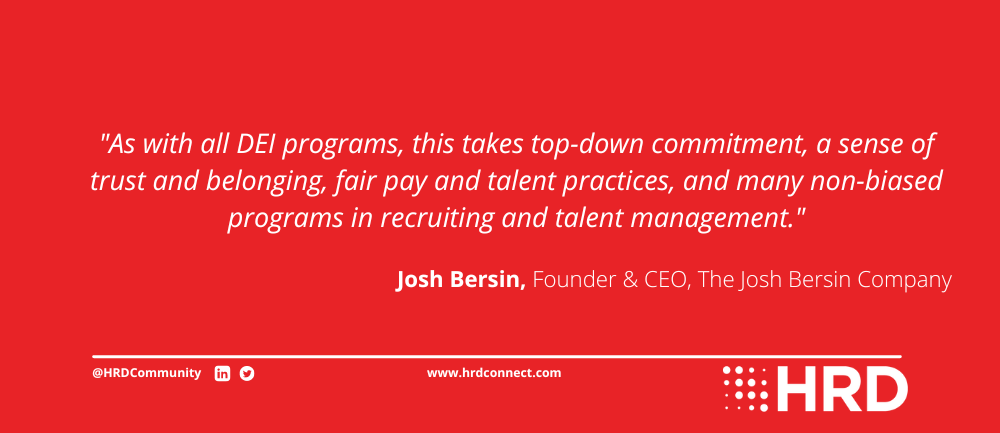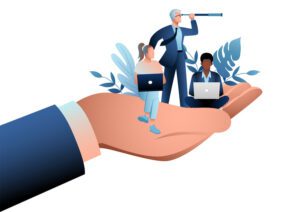Josh Bersin: Implementing people sustainability to reduce human capital risk
- 5 Min Read
People sustainability unites concepts such as equity, well-being, and fairness under one umbrella. Rather than focusing on each project or buzzword, it encourages a forward-thinking approach to engaging with your workforce. Uniting these concepts and tying them to business goals not only improves the employee experience but also helps meet customer needs and mitigate human […]
- Author: Benjamin Broomfield
- Date published: Feb 6, 2023
- Categories

People sustainability unites concepts such as equity, well-being, and fairness under one umbrella. Rather than focusing on each project or buzzword, it encourages a forward-thinking approach to engaging with your workforce. Uniting these concepts and tying them to business goals not only improves the employee experience but also helps meet customer needs and mitigate human capital risks.
Josh Bersin highlights people sustainability as a concept that will redefine work in 2023. In this exclusive Q&A with HRD Connect, we discuss why people sustainability matters, what metrics are important for tracking performance, and how it drives long-term HR and business goals.
1) What is people sustainability and how does it differ from approaching equity, well-being, and fairness as separate projects?
Josh Bersin: This is a combination of more conscious support for employees on physical and mental health but also financial well-being. It means many things: diversity, pay equity, fairness, freedom from harassment, safe working conditions, psychological safety, and more.
Many DEI programs sit within HR and tend to focus on recruiting, pay equity, and various forms of diversity training. These programs, while well intended, often don’t have c-level support.
With a new EU law coming into effect in 2024, all companies doing more than $150M in business in the EU must document end-to-end sustainability measures, including this ‘people sustainability’. Companies like SAP, Heineken, and others are now including DEI as a people sustainability measure to get C-level and board-level involvement.
2) How can business leaders unify fairness, equity, belonging, and well-being under the roof of people sustainability?
Josh Bersin: As with all DEI programs, this takes top-down commitment, a sense of trust and belonging, fair pay and talent practices, and many non-biased programs in recruiting and talent management.
There are more than fifty DEI “Practices” we studied in our Elevating Equity research and almost eighty in our Employee Experience research – many of these come back to management training, accountability, and open discussions about problems. This is the work that DEI and people experience leaders do. By far the most important concept of all is to frame DEI as a business strategy.
In practice, this means reframing the role of diversity. It means emphasizing the role diversity plays in hiring, the supply chain, and leadership to help better serve new customer segments, meet the needs of our existing customers, and improve the supply chain. Companies like AT&T, Sysco, and Target define their businesses as “serving a diverse community of customers.” They see DEI as a business imperative, not an HR “program.”
3) What are the metrics that matter when measuring people sustainability?
Josh Bersin: Many things. To name a few: DEI measures, promotion by race, age, gender, pay equity, turnover rate by intersectionality (for example Race and gender), number of EEOC claims, employment brand, employee engagement, winning best place to work contests, lack of accidents, records of promotion within the company, and quality and reputation of leadership.
Companies have dozens of these and the EU guidelines include many.
4) Why does a holistic approach lead to better people and business outcomes?
Josh Bersin: Since most companies are now “talent constrained” (73% of CEOs are concerned with skills and alignment of people, according to a PWC CEO survey), these measures can form the basis of a long-term, low-risk people strategy.
If a company has a lawsuit, fire, death, harassment claim, child protection, or poor working conditions, these are big risks – risks to the business, brand, and long-term customer success. So, moving these topics beyond “employee experience” (which is an internal HR term) makes it a risk mitigation and business growth agenda, which is what CEOs and CFOs care about.
5) How can this help organizations mitigate the myriad risks associated with human capital such as health and safety, child protection, and collective bargaining?
Josh Bersin: This type of program helps enormously with all these issues, including helping to keep labor unions in line with company programs. Such a commitment will convince labor leaders that management takes its people’s responsibilities seriously.
Take Heineken. It discovered that people were abusing many of its young contractor female workers at bars and restaurants in Africa. This became a “brand risk” for the company, forcing the CEO to invest heavily in an end-to-end “people sustainability” agenda around the world to prevent such brand and personal risk.
BP and Exxon have faced fires and environmental disasters that taught the company to build entire teams focused on safety, compliance, and a culture of risk mitigation. Lowes, the home improvement retailer, specifically raised wages to improve standards of living to prevent unionization in its locations.
These are business risk mitigation and investments in “people sustainability” that makes the company more resilient, enduring, and attractive to customers.
6) What steps can organizations take to reduce human capital risks in the long term?
Josh Bersin: The #1 step is to assign someone to look at these issues holistically. Consider the “downside” to doing poorly in any of these measures. It’s not a good idea to wait for a “people disaster” to occur because the brand damage can be long-lasting.
This means asking the head of HR to build a cross-functional team to look at people risks, including retention, ability to hire, brand, as well as the measures above. then develop a scorecard to measure these, revisit these, and hold leaders accountable.
Just like how hospitals have many measures for patient safety and outcomes (which they measure against diversity, by the way), companies should also do this for their employees, contractors, and supply chain.
_________________
Josh Bersin is a global HR Analyst and CEO of The Josh Bersin Company, a research and advisory company focused on HR and workforce strategies.











